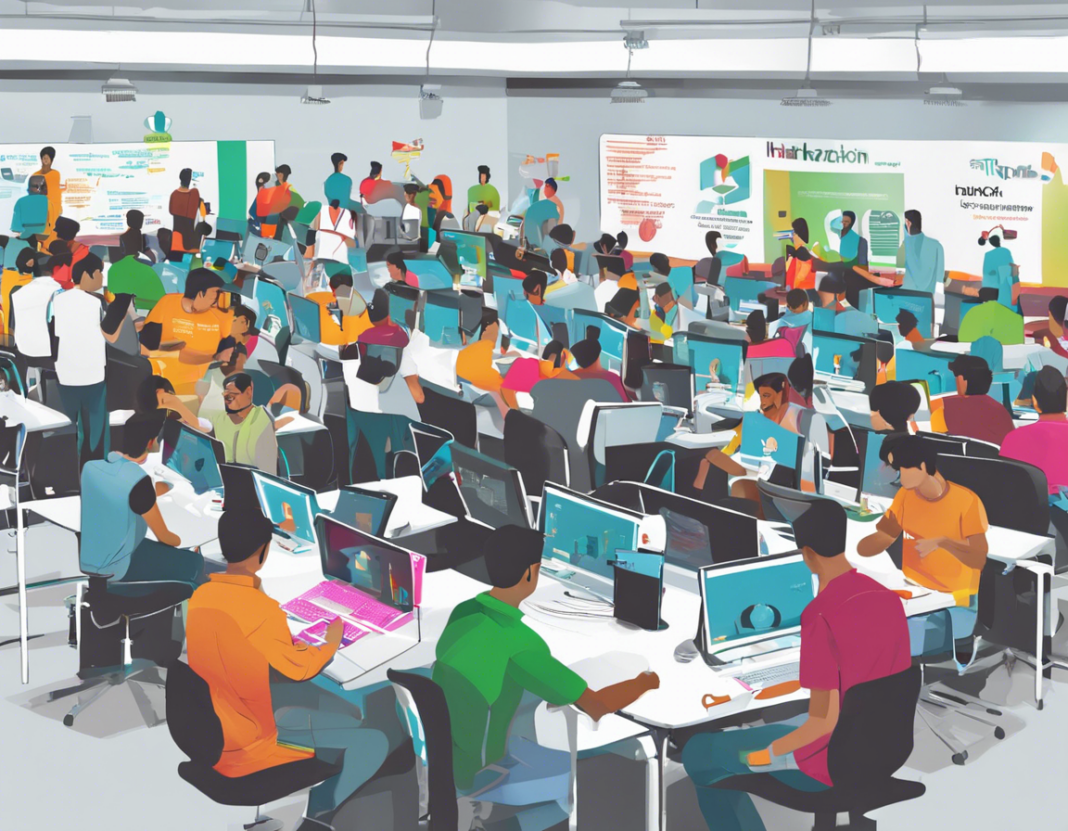In the ever-evolving landscape of technology and innovation, hackathons have emerged as powerful platforms for fostering creativity, problem-solving, and collaboration. Among the many hackathons that have made a mark on the global stage, the Smart India Hackathon stands out as a flagship initiative in driving innovation and digital transformation in India.
Understanding the Smart India Hackathon
The Smart India Hackathon (SIH) is an initiative by the Government of India under the Ministry of Human Resource Development (MHRD) and All India Council for Technical Education (AICTE). Launched in 2017, the hackathon aims to harness the creative and technical acumen of students to solve real-world challenges faced by various industries and government organizations.
Participation and Impact
The Smart India Hackathon has garnered significant attention and participation since its inception. Teams of students from engineering, management, and other disciplines compete in a 36-hour non-stop coding marathon to develop innovative solutions for problem statements provided by partner organizations. These problem statements cover a wide range of domains, such as agriculture, healthcare, finance, education, cybersecurity, and more.
The hackathon has seen participation from thousands of teams comprising students from institutions across India. Industry experts, mentors, and evaluators play a pivotal role in guiding and assessing the solutions developed during the event. The collaborative environment of the hackathon not only fosters innovation but also nurtures teamwork, critical thinking, and entrepreneurial skills among the participants.
Key Features of the Smart India Hackathon
-
Diverse Problem Statements: The hackathon addresses challenges across multiple sectors, providing participants with a broad exposure to real-world issues.
-
Government-Industry Collaboration: The partnership between government organizations and industry leaders enables students to work on relevant and impactful problem statements.
-
Skill Development: Participants have the opportunity to enhance their technical skills, learn new technologies, and improve their problem-solving abilities.
-
Networking Opportunities: The hackathon serves as a platform for students to connect with industry experts, potential employers, and like-minded innovators.
-
Prizes and Recognition: Winning teams receive awards, recognition, and opportunities for further collaboration with the sponsoring organizations.
Harnessing Innovation for National Development
The Smart India Hackathon aligns with the government’s vision of Digital India and Skill India. By encouraging students to tackle societal challenges through technology-driven solutions, the hackathon not only contributes to national development but also nurtures a culture of innovation and entrepreneurship among the youth.
Future Prospects and Expansion
As the Smart India Hackathon continues to gain momentum and visibility, there are plans to enhance its scope and impact. The organizers aim to involve a larger number of industry partners, promote cross-disciplinary collaboration, and explore avenues for international participation. By scaling up the hackathon and integrating it with incubation and acceleration programs, the goal is to ensure that the innovative solutions developed during the event are nurtured and commercialized for a wider societal benefit.
Frequently Asked Questions (FAQs)
1. What is the eligibility criteria for participating in the Smart India Hackathon?
Students enrolled in any recognized institution in India, pursuing undergraduate, postgraduate, or doctoral programs, are eligible to participate in the hackathon.
2. How are the problem statements selected for the hackathon?
Government organizations, PSUs, and industry partners submit problem statements based on their specific requirements and challenges. A screening process is conducted to finalize the problem statements for the competition.
3. Can international students participate in the Smart India Hackathon?
Currently, the hackathon is open only to students from institutions within India. However, there are plans to explore international participation in the future editions.
4. What support is provided to the participants during the hackathon?
Participants have access to mentors, technical experts, and infrastructure facilities to support them during the coding marathon. Workshops and training sessions are also organized to enhance their skills.
5. How are the solutions evaluated during the hackathon?
Evaluators from industry and academia assess the solutions based on criteria such as innovation, feasibility, impact, and technical implementation. Winning teams are selected based on their performance against these parameters.
6. Are there opportunities for collaboration with the sponsoring organizations post the hackathon?
Yes, winning teams and standout solutions have the opportunity to collaborate with the sponsoring organizations for further development, implementation, or deployment of their solutions.
7. How does the Smart India Hackathon contribute to the government’s initiatives like Digital India and Skill India?
By promoting technology innovation, skill development, and problem-solving, the hackathon aligns with the objectives of Digital India and Skill India by empowering the youth with the tools and capabilities to drive national development.
8. What are some success stories that have emerged from past editions of the Smart India Hackathon?
Several innovative solutions developed during the hackathon have been implemented by government organizations and industry partners to address critical challenges. These success stories serve as inspiration for future participants and underscore the impact of the hackathon.
9. How can institutions and industry partners collaborate with the Smart India Hackathon?
Institutions and industry partners can sponsor problem statements, provide mentorship, offer prizes, or organize workshops as part of their collaboration with the hackathon. Such partnerships facilitate knowledge exchange and promote innovation ecosystem.
10. What are the key takeaways for participants from the Smart India Hackathon?
Participants gain valuable hands-on experience, networking opportunities, industry exposure, and recognition through their participation in the hackathon. The skills and insights acquired during the event are invaluable for their personal and professional growth.
In conclusion, the Smart India Hackathon serves as a catalyst for innovation, collaboration, and socio-economic development. By empowering the youth with the tools and platform to address real-world challenges through technology, the hackathon is not just a competition but a transformative journey towards a smarter and more sustainable future for India.
